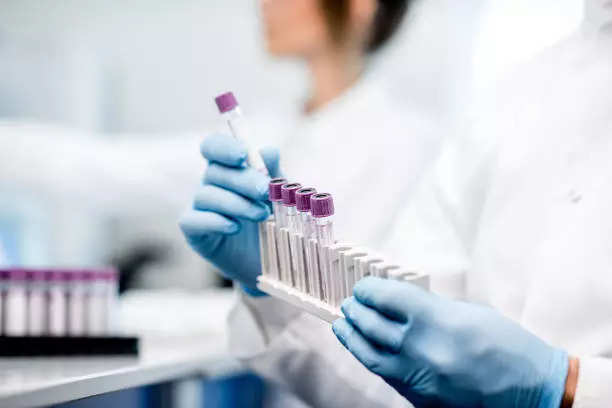
Jonathan D. Grinstein, PhD, the North American Editor of Inside Precision Medicine (IPM), hosts a new series called Behind the Breakthroughs that features the people shaping the future of medicine. With each episode, Jonathan gives listeners access to their motivational tales and visions for this emerging, game-changing field.
Imagine a future where your ancestry not only tells a story about your past but also holds the key to your health. That’s the vision that drives Carlos D. Bustamante, PhD, population geneticist and founder of Galatea Bio, as he embarks on an ambitious mission: building a biobank of 10 million genomes to transform drug development and healthcare across Latin America.
With thousands of founder populations scattered across the region—from the valleys of Medellín to the islands of the Caribbean—Latin America is a goldmine of genetic diversity. Yet, until now, it has been largely overlooked in genomic research. In this Behind the Breakthroughs episode, Bustamante explains why mapping this diversity can uncover genetic insights that will lead to better treatments for diseases that disproportionately affect these communities.
Highlights of this interview have been edited for length and clarity.
IPM: What motivated you to establish Galatea Bio and create a new biobank?
Bustamante: Let me give you an observation about EGFR mutations in lung cancer. It happens to be that Asian populations have significantly more EGFR-positive lung cancer than European populations. Why could that be? It could be environmental or underlying genetics—we don’t know yet. How do you begin to think about that problem and then the development of new medications along the way?
The opportunity for learning something new in a biobank that hasn’t been sequenced yet will be higher than one that’s already been genotyped and sequenced. If you build it, then you may have the opportunity to learn new things because of these differences in population prevalence.
We started in Latin America for two reasons. One, we’re big believers in founder populations; in the Americas, you have a thousand or more founder populations. [Latin America] has many islands: Puerto Rico, the Dominican Republic, Cuba, and the Lesser Antilles. Then you have islands between mountains because each of those valleys is a different island. If you think about the “Paisa” people around Medellin, Colombia. In that case, they have a genetic founder set of alleles different from the coastal population, say, in Barranquilla or Cali, so we know that from a population perspective.
Now, how do you use that to do discovery at scale? We set an audacious goal to really move the needle, and we said if you got to a hundred thousand interesting cases for a bunch of these chronic diseases, that would be interesting. Still, just a hundred thousand random controls—many others like that. So, we need many cases, and if you got to a massive group, say 10 million people, you could have a mixture of cases and controls, and then you’d also find some of these protective alleles.
Ultimately, you want to build pharma consortia that get traction and can underwrite this sequencing, so we work closely with the instrument manufacturers to figure out how we would do that. In the United States, you also have a whole world of insurance-based clinical genetic testing that works. If you’re at risk of breast cancer in this country for hereditary reasons, then you can get that covered. It’s covered by either state-funded insurance, like Medicare or Medicaid, or it’s covered by private insurance.
Sequencing costs money, particularly for patients with interesting presentations. Five to ten percent of the population deserves to be sequenced for medical reasons, and so you kind of roll that in as part of the business model. The data that gets generated then ultimately becomes a driver asset for the whole business.
We’ve set up the clinical testing lab and biobank and obtained sufficient financing to build prototypes and go to market. Our next phase is to sequence a subset of the data we have and then combine that data with other data to make it available to pharma partners and others.
IPM: What have you learned from those who have come before you in the “DNA business,” like 23andMe?
Bustamante: Given my roots as a researcher and advisor to companies, I always try to remember the difference between research and clinical; it sometimes blurs in folks’ minds. But in general, we tend to have a pretty clear line when you’re talking about research, or you’re talking about clinical work, and there is a need to enable clinical testing at a scale that will identify people at risk based on bona fide, well-understood science and public health. That has built up over time.
If somebody sees a physician who believes that there may be a genetic origin to a condition or that understanding genetics can improve management, then let’s order a genetic test. We wanted to meet that criteria. We thought that was important for us as a company to do.
We also want to be able to do a lot of research and make research findings available to people. You don’t want to charge people to be research participants; that’s usually not a tried and true way of doing things. If you’re going to do a research project, you enroll people, give them informed consent, and explain to them what you’re going to do, what’s going to happen to your data, and this is what you may or may not get access to. In some research studies, you get results back; in some research studies, you don’t get results back. It depends on the written protocol.
We also have an IRB-approved study that allows us to sequence people, whether or not they have a medical condition, and certain tools that we have permission to deploy and return research findings that differ from clinical findings. Ancestry is one of the first tools. That’s often a way that people want to participate. They might get back an ancestry result; that might be cool. The All of Us project, for example, does something like this.
The last thing we wanted to have is the ability, as we were doing research, to build registries of people that could be contacted were we to find out that they might be enrollable in future studies or whatever reason, either based on what we find or based on the fact that if you’re going to go out and recruit 10 million people, maybe we can keep their names, email addresses, and information if some of the pharma partners that may underwrite some of this could be interested in doing some recruitment. Those pieces are for us to do clinical testing and sequencing in the context of clinical care and be able to do research. Closing the loop in returning results to participants and being able to enroll people in additional studies potentially gives us the roadways that we want to operate on.
There’s a growing sensitivity around data, so we’re trying to be thoughtful in doing that by getting an IRB and having them tell us what we should and shouldn’t do with data. They’re the ones who have independence and can guide the right rules of the road on that HIPAA and the standard provider rules bind us when it comes to clinical data. Then, we keep a kind of firewall between the business’s clinical operations and the business’s research operations. So, I would say it is a different model; it requires investment in a lot of extra regulatory and other elements, but we wanted that.
Taking off my Galatea Bio hat and putting on my fellow citizen’s cap, I believe we should have a marketplace where different products are available. I was very excited to help Ancestry DNA start their DNA business. They found that some people like genealogy and want to spend time online learning it, and DNA is a useful tool in that regard.
I hope that we can create the right incentives for people to continue wanting to learn about their DNA as an industry. We don’t benefit in a world where people are discouraged from doing this, but I think you have to have some transparency and long-term. Different companies will come and go at different times in the evolution of markets. That’s just part of the life history of how these things evolve.
We’re living in very interesting times for the industry, and I think there are also cultural changes happening across dominant generations. So what the baby boomers want, especially around ancestry, may be different than what Gen Z wants, and certainly what Alphas want and what they’re willing to do and think about. You have to meet people where they are and be transparent about what the products are and how you’re using the data in what you’re building.
IPM: When should people get their genomes sequenced?
Bustamante: Let’s take these as life history stages. Do I agree that sequencing babies is a good idea? Absolutely, but they should be sequenced in the context of what we already do to identify newborns with presentations where you can intervene early to avoid long-term health effects. PKU is an incredibly successful public health screening program. There’s a set of conditions that we want to screen from a public health point of view, and this happens at the hospital on the first day of life with a heel prick, which is again for everybody’s benefit as public health.
Do we want to be scoring people for their APOE Alzheimer’s alleles on the first day of life? Probably not. I don’t see why we would. Are there conditions that we want to make sure people are aware of? Sure. You’re not talking about many conditions, things that you could have intervened in and done gene therapy for; let’s roll out a world in which you have market competition for biologics and potential solutions for gene therapies targeting these conditions. Then we want to medicate early on, and yet that’s really the goal of precision medicine. Kids should have pharmacogenetics passports.
All of this, everything I’ve mentioned, involves physicians and healthcare workers. You’re going to find this out from an app. All of this is happening in the context of public health. People aren’t paying for these events out of pocket. This is part of the benefits of living in an industrialized society where you can access technology and then make informed healthcare decisions based on functional health systems. Then, later on in life, there’s tier-one screening for the rest of the conditions years before they become important, but not on day one.
IPM: What is it about population genetics that keeps you so fascinated?
Bustamante: Population genetics gave us a theoretical framework to understand genetic data; without population genetics, we wouldn’t be able to do a lot of the gene mapping stuff that has led to a bona fide understanding of the genetic basis of disease. That is not true for other areas; there’s no true theory about gene expression that gives you a null hypothesis to compare some. But it’s very different than population genetics, where you have bona fide math that drives an understanding, linkage, and disequilibrium evidence of selection, migration, mutation, and all of that stuff. So it’s a beautiful science that, for a long time, was just theory until we had data. That’s what, for me, was so fascinating.
We didn’t complete the Human Genome Project in 2001, and we won’t ever complete it. It’s a study of understanding variation in the human genome, and that study continues.








![Best Weight Loss Supplements [2022-23] New Reports!](https://technologytangle.com/wp-content/uploads/2022/12/p1-1170962-1670840878.png)




